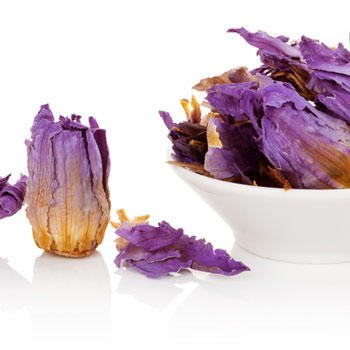Bertol, E., Fineschi, V., Karch, S. B., Mari, F., & Riezzo, I. (2017). Nymphaea cults in ancient Egypt and the New World: A lesson in empirical pharmacology. Journal of the Royal Society of Medicine, 97(2), 84–85. doi:10.1177/014107680409700214
Coleman, D. (2010). New order bands ‘designer’ drugs. Retrieved 19 January 2023 from https://www.dvidshub.net/news/62419/new-order-bans-designer-drugs
Commanding General, U. (2013). Marine Corps Installations East Bulletin 5800, Prohibited Substances. (MCIEASTBul 5800). U. S. Marine Corps. Retrieved 19 January 2023 from https://www.mcieast.marines.mil/Portals/33/Documents/Adjutant/Bulletins/MCIEASTBUL/MCIEASTBul%205800%20CANC%20FEB%2013.pdf.
Corazza, O., Martinotti, G., Santacroce, R., Chillemi, E., Di Giannantonio, M., Schifano, F., & Cellek, S. (2014). Sexual enhancement products for sale online: Raising awareness of the psychoactive effects of yohimbine, maca, horny goat weed, and Ginkgo biloba. BioMed Research International, 2014, article 841798. doi:10.1155/2014/841798
Fattore, L., & Fratta, W. (2011). Beyond THC: The new generation of cannabinoid designer drugs. Frontiers in Behavioral Neuroscience, 5(article 60). doi:10.3389/fnbeh.2011.00060
Kesselring, J. R. (2021). Blue lotus flower. U. S. Army, Army.mil. Retrieved 19 January 2023 from: https://home.army.mil/wiesbaden/application/files/7016/4336/9082/Blue_Lotus_IP.pdf
Louisiana State Legislature. (2011). 2011 Louisiana Laws Revised Statutes TITLE 40 — Public health and safety RS 40:989.2 — Unlawful production, manufacturing, distribution, or possession of prohibited plant products. legis.la.gov: Louisiana State Legislature. Retrieved 19 January 2023 from http://legis.la.gov/legis/Law.aspx?d=726196.
McDonald, J. (2018). Influences of Egyptian lotus symbolism and ritualistic practices on sacral tree worship in the Fertile Crescent from 1500 BCE to 200 CE. Religions, 9(9). doi:10.3390/rel9090256
Office of Fort Meade Staff Judge Advocate. (2012). Army prohibits use of marijuana substitutes. Retrieved 19 January 2023 from https://www.army.mil/article/83415/army_prohibits_use_of_marijuana_substitutes
Officer, L., Moss, J., & Brock, M. (2021). Blue lotus-induced seizures in active duty soldier. Retrieved 19 January 2021 from https://www.aesnet.org/abstractslisting/blue-lotus-induced-seizures-in-active-duty-soldier
Peace, M. R., Smith, M. E., & Poklis, J. L. (2020). The analysis of commercially available natural products recommended for use in electronic cigarettes. Rapid Communications in Mass Spectrometry, 34(11), article e8771. doi:10.1002/rcm.8771
Poklis, J. L., Mulder, H. A., Halquist, M. S., Wolf, C. E., Poklis, A., & Peace, M. R. (2017). The blue lotus flower (Nymphea caerulea) resin used in a new type of electronic cigarette, the re-buildable dripping atomizer. Journal of Psychoactive Drugs, 49(3), 175–181. doi:10.1080/02791072.2017.1290304
Polom, C. D. (2010). Marine Corps prohibits legal substances. Retrieved 19 January 2023 from https://www.cherrypoint.marines.mil/News/Article/524742/marine-corps-prohibits-legal-substances
Powell, A. (2010). MCO lists banned substances. Retrieved 19 January 2023 from https://www.albany.marines.mil/News/News-Article-Display/Article/508199/mco-lists-banned-substances
Schimpf, M., Ulmer, T., Hiller, H., & Barbuto, A. F. (2021). Toxicity from blue lotus (Nymphaea caerulea) after ingestion or inhalation: A case series. Military Medicine, online(4 August), article usab328. doi:10.1093/milmed/usab328
Secretary of the Navy. (2005a). SECNAV Instrucation 5300.38D - Military substance abuse prevention and control. (SECNAVINST 5300.28D). Department of the Navy, Office of the Secretary. Retrieved 19 January 2023 from https://www.mcasyuma.marines.mil/Portals/152/Docs/Legal/5300.28D.pdf.
Secretary of the Navy. (2005b). SECNAV Instrutions 5300.28D - Military Substance Abuse Prevention and Control. (SECNAVINST 5300.28D). Department of the Navy, Office of the Secretary. Retrieved 19 January 2023 from https://www.mcasyuma.marines.mil/Portals/152/Docs/Legal/5300.28D.pdf.
U.S. Army. (2020). Army Rmkl. Regulation 600–85: The Army substance abuse program. from https://armypubs.army.mil/epubs/DR_pubs/DR_a/ARN38035-AR_600-85-002-WEB-5.pdf
U.S. Coast Guard. (2022). Commandant Instruction 1000.10b: Military substance abuse and behavioral addiction program. from https://web.archive.org/web/20230205082903/https://media.defense.gov/2022/Nov/02/2003107402/-1/-1/0/CI_1000_10B.PDF
U.S. Department of Defense. (2020). Department of Defense Instruction 1010.04: Problematic substance use by DoD personnel. from https://www.esd.whs.mil/Portals/54/Documents/DD/issuances/dodi/101004p.pdf
U.S. Secretary of the Air Force. (2019). AFMAN 44-197: Military drug demand reduction program. from https://static.e-publishing.af.mil/production/1/af_sg/publication/dafman44-197/dafman44-197.pdf

